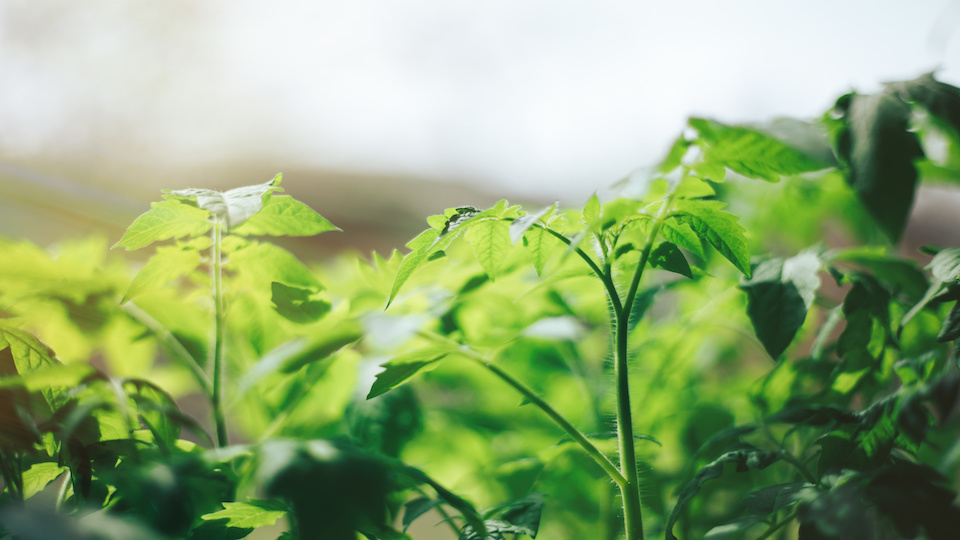Keyhole gardens are a way of integrating several gardening chores for easy management. It includes growing vegetables, watering the beds, and composting garden waste, all at the same time. Pioneered in Africa, keyhole gardening is now a time-tested technique that saves time, space, and minimizes the effort required to maintain a productive garden.
The basic structure
A keyhole garden is basically a circular raised bed with a composting tower in the center. Every garden generates organic waste on a daily basis, so a path is cut in the bed to make the composting tower easily accessible, thus giving the structure the signature keyhole shape.
The central compost chute
The central composting tower is the heart of the structure. A tall, woven bamboo or twig basket is usually used in Africa, but an old tomato cage or a roll of chicken wire made into a cylinder should work just fine.
The circular raised bed
A raised bed is constructed around the composting tower and filled with layers of organic material from cardboard and newspapers to topsoil, manure, and compost. The original keyhole beds were put together by weaving strips of canvas, cloth or plastic sheet through wooden stakes driven into the ground along the periphery of the bed.
As for modern keyhole gardens, bricks or cement blocks may be simply stacked up to form the outer edge of the bed, or they may be cemented together for a more permanent structure.
The process
All kinds of garden waste such as fallen leaves, post-harvest debris, straw, and grass cuttings can be put into the central compost tower. Biodegradable household waste can also go in there, except meat waste that might attract animals. This garbage pile is watered to kick start the composting process.
As soon as the raised bed is ready, you can plant root and leafy vegetables. Water daily until the plants are established. Thereafter, only the compost chute needs water, so that the water gradually seeps into the surrounding bed along with the nutrient-rich leachate from the compost.
Once the system starts running, the only regular chores are dumping waste into the central chute and watering it. The vegetable bed automatically gets watered and fertilized. Since the moisture is seeping in from the inner wall of the bed and the bottom, it reduces weed problems. Any weeds that sprout can be quickly pulled out and added to the compost pile.
Why should you have a keyhole garden?
Although keyhole gardens were originally built in hot areas to produce food with minimum effort, while also conserving meager water resources, they have proven to be just as useful everywhere in the world. There are so many good reasons to have one or several of them in your garden.
Keyhole gardens are neat and compact
A keyhole garden is typically not more than 6 feet across. This is because the width of the garden bed around the central chute is limited to 2 to 2 ½ feet so that the entire bed is within its seepage range. Planting, weeding, and harvesting is easier.
The compost pile is neatly tucked away at the center of the garden bed, and the lush plant growth around it further helps to camouflage it. This makes a keyhole garden just right for small yards and urban settings.
Keyhole gardens are highly productive
Keyhole gardens are productive all year in warmer areas. They help to extend the growing season elsewhere by keeping the soil relatively warm with the heat emanating from the compost pile.
Keyhole gardens save water
Saving water in the arid African plains was one of the main objectives of keyhole gardens in the first place. Dry garden waste usually takes a year or more to breakdown into compost. When the pile is watered, this process is accelerated, and the surrounding bed also remains moist enough to sustain plant growth. Since the top layer of soil remains dry, water loss through evaporation is minimized.
Keyhole gardens cut down gardening chores
Normally, a compost pile is managed separately, and the compost is transported to the vegetable beds when it is ready. Both need to be watered regularly, too. Keyhole gardening combines these by making compost right at the garden and letting plant roots directly take advantage of the nutrients.
Keyhole gardens are easy to build and maintain
The simple layout of keyhole gardens makes them easy to put together. As a matter of fact, when they were first introduced in Africa, the technique was taught to school children so that they could go home and make it themselves. Even when made with sticks and cloth, keyhole gardens last long and require minimal maintenance.
Are you ready to make your very own keyhole garden?
-Susan Patterson




